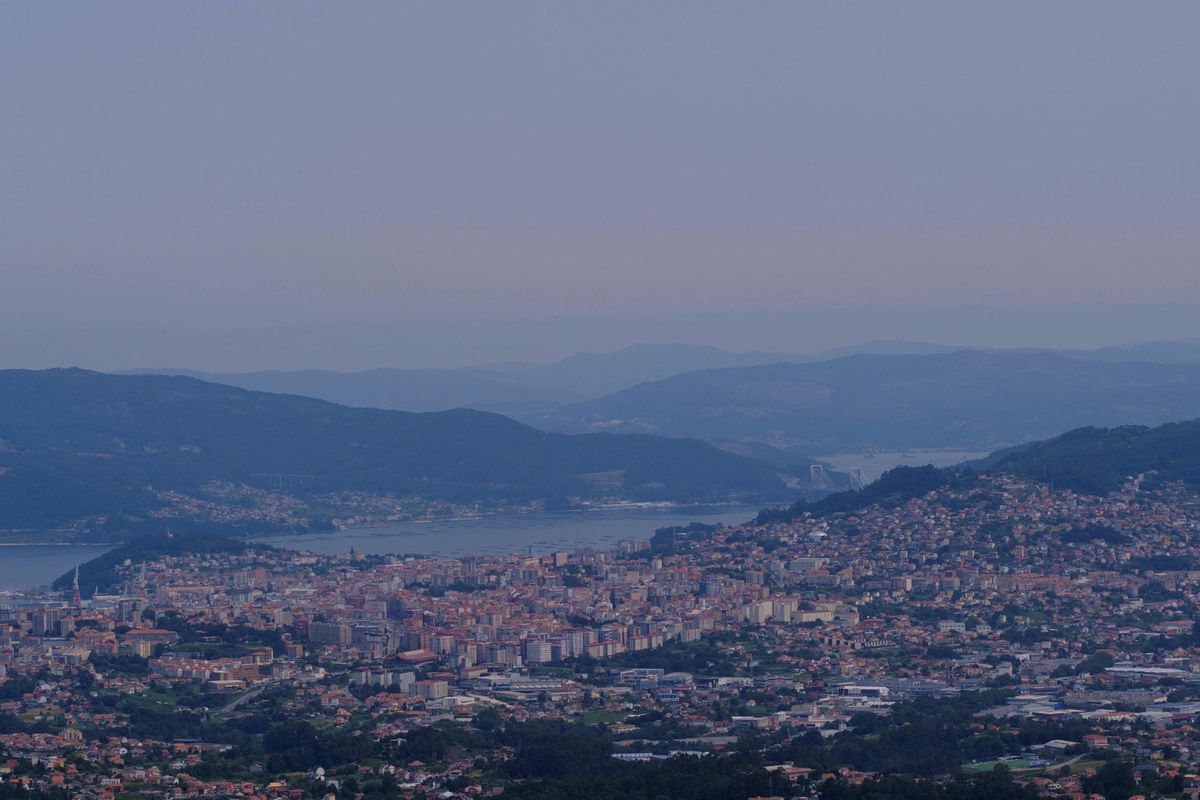 Smoke from the fires from Canada in Vigo this Monday. MIGUEL RIOPA (AFP)
Smoke from the fires from Canada in Vigo this Monday. MIGUEL RIOPA (AFP)
The hundreds of fires that are devastating Canada can already be felt in Spain, around 7,000 kilometers away: Smoke from the region reached Galicia and Portugal this Monday. “It’s an unusual episode, it’s striking that the particles have traveled such a long distance,” says Francisco Infante, delegate of the State Meteorological Agency (Aemet) in Galicia. A haze was observed in cities like Vigo during the day, although most of the particles are in the upper part of the atmosphere and diffuse when they touch the peninsula, so they are not expected to affect air quality. According to official data, Canada’s fires have burned 7.2 million hectares this year – 24 times more than what burned in Spain last year – with 1.4 of them burning in the past seven days. Climate change will make these episodes more frequent.
“Satellite images show that the plume of smoke from Canada reached the peninsula this Monday. However, the particle concentration is very low, which is why it has so far only been observed in the coastal areas of Galicia. When they hit the ground, they disappear. The highest concentrations occur in the highest layers of the atmosphere, not at the surface,” confirms the Aemet spokesman. And he continues: “It is normal that we receive meteorological phenomena from this country, because the storms that we experience in winter are usually generated there, but the matter produced by the burning of forests tends to to disperse; In order for it to get to us, there must have been gigantic fires.”
Canadian smoke in the Noia Estuary this Monday. OSCAR CORRAL
Mark Parrington, scientist at the Copernicus Atmosphere Monitoring Service, adds: “Long-distance smoke spreads on an intercontinental scale are not uncommon when emissions from fires increase. Typically, this shift occurs higher up in the atmosphere (between 2 and 8 kilometers), where atmospheric lifetimes are longer and winds are stronger.
Ferran Dalmau-Rovira, forest management expert, cites figures: “In Canada, 7.2 million hectares have already burned, surpassing the country’s worst historical figure in four decades, which was 7.1 million in 1995. And it’s still half the year left. The expert, using data from the Canadian Forest Fire Center (CIFFC), explains: “Lightning caused by storms typically accounts for half of Canada’s fires, burning 85% of the surface.” There are currently 461 active fires, of which 237 are out of control, and there have been 2,880 fires registered so far this year. The climate emergency with its rising temperatures and extreme weather events is driving such large fires, which are expected to become increasingly violent and virulent.
 The entire team from the entire Spanish contingent deployed to fight fires in Canada in an image released by the Association of Workers of the Forest Fire Reinforcement Brigades.RR SS
The entire team from the entire Spanish contingent deployed to fight fires in Canada in an image released by the Association of Workers of the Forest Fire Reinforcement Brigades.RR SS
Information is the first remedy against climate change. Subscribe to her.
subscribe to
According to the Ministry of Ecological Transition, Spain has dispatched nearly a hundred forest firefighters and other professionals to help fight species extinction efforts. Of these, 27 come from Teresa Ribera’s own department and the rest from different autonomous communities: 25 from the Special Unit for Emergencies and Emergency Response (ERICAM) of the Autonomous Community of Madrid and members of the Service for Prevention and Extinguishing of Forest Fires from Castilla-La Mancha, firefighters from Catalonia, from the Murcia fire protection unit and from other autonomies.
Low health impact
Will this smoke have any effect on the weather? Parrington of Europe’s Copernicus program doesn’t think so: “Most of the smoke generally travels at high altitudes and is unlikely to have a direct impact on the weather in Spain.” If the smoke is dense enough, it can in Slight reductions in surface temperatures can occur in the vicinity of the smoke plume. The interactions between smoke and weather are numerous and complex and an active area of research.”
On the other hand, it can affect people with respiratory diseases, according to Perla Valenzuela, secretary for work-related and environmental respiratory diseases of the Spanish Society of Pneumology (Separ): “The forest fire has toxic smoke, albeit with less harmful residues than other industrial fires and transports fine dust – so-called PM₂,₅ particles – which can affect people with respiratory conditions such as asthma or chronic obstructive pulmonary disease (COPD).” Symptoms can include itchy nose and eyes, coughing and throat irritation. “When these types of episodes are very intense, these patients’ emergencies tend to increase. When air quality falls below normal levels, it is recommended that they refrain from outdoor physical activity and close the windows and doors of their homes. “he continues. .
The Aemet forecast does not assume that air quality will be affected by this smoke. Its spokesman, Infante, points out that the dust incursions in the Sahara, which regularly occur in Spain, have a high concentration of PM₂,₅ particles that can damage health and affect breathing, while in this case it is to be expected that the air quality is “poor”. reasonably well and the particle concentration will decrease this Tuesday until it almost disappears on Wednesday.
You can follow KLIMA UND UMWELT on Facebook and Twitteror sign up here to receive our weekly newsletter

